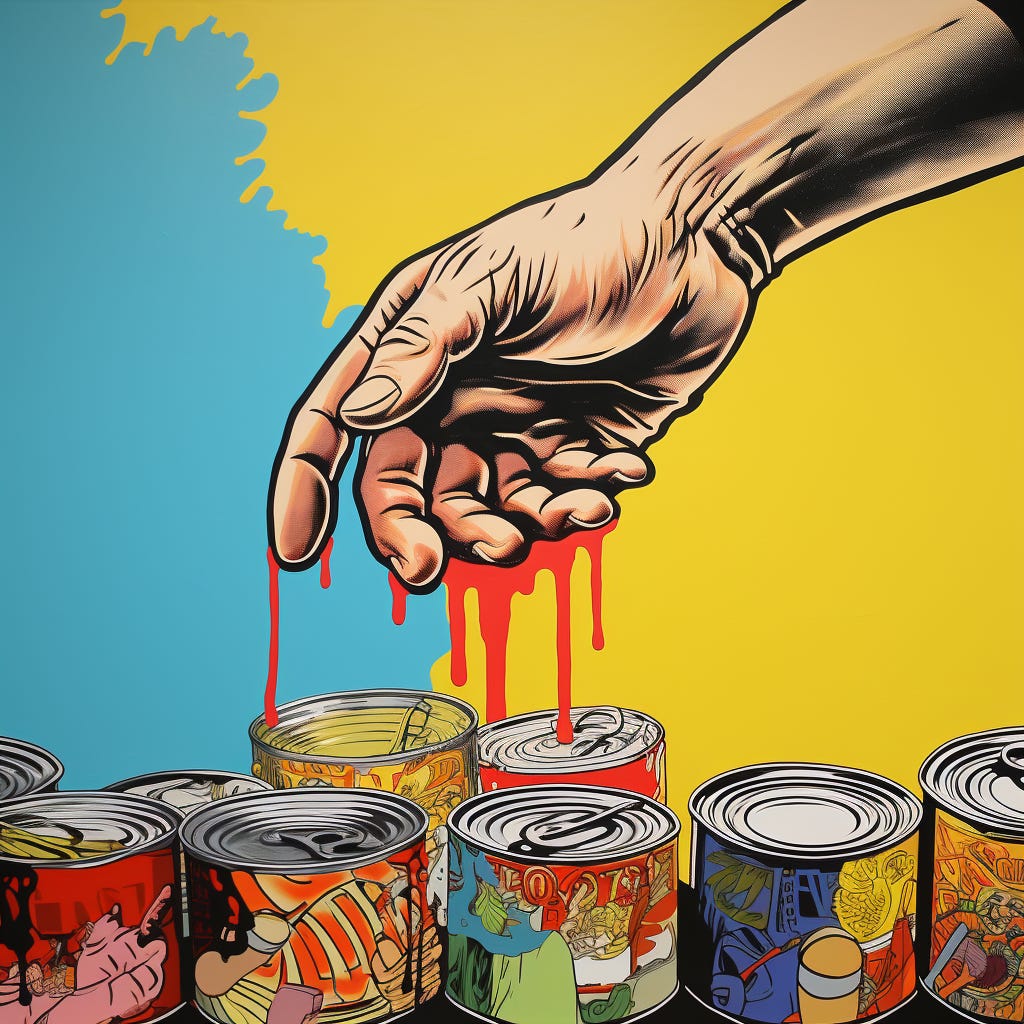If I must start somewhere, right here and now is the best place imaginable.
- Richelle E. Goodrich
In the months after publishing my first novel, a friend of mine hit me up with the idea to write a leadership book. I wasn’t exactly sold on the prospect, but since I was searching for ways to grow as a writer, I was willing to hear him out. So began an extended conversation that evolved from being about military leadership lessons for business people (overdone and boring), to being about how to be a good citizen for our kids (a question with involving huge skin in the game). More specifically, the question that drove our initial brainstorming was the following: if we knew we weren’t going to be there for our kids as they grew up, what would we tell them about being a good person?
We tried this idea on for size for several months, designed a so-so structure we believed would appeal to younger readers and came up with a number of good and not so-good thoughts about how to proceed. My friend suggested illustrating the book in the manner of All Minus One, by Heterodox Academy, a graphic designed refresh of John Stuart Mill’s ideas on free speech. My contribution, or at least one of them, was to make the book the literary version of the ‘Finding a Martial Art Master’ trope, which is where a prospective student begs a master to take them on and then has to sit through days / weeks / months of rejection until they’re accepted because that was actually a test of their readiness to learn. Anyways, I literally just wrote that some of the suggestions were not-so-good, and while an editor eventually convinced me that it was a poor strategy to write a book where a portion of the narrative tells the reader to stop reading, echoes of this approach remain. On the plus side, most of the good ideas made it, including the idea to incorporate illustrations, with more on this later.
To summarize a year of work, we started out strong and then lost momentum, as tends to happen when writing a book. My friend drifted off and over a number of following years, I ended up working on it myself in between other novels. With this work method, I finished a first draft and later still, a second and then a third, got the project far enough that I sought advice from an editor and then was then able to start the rounds of querying publishers and agents. And, while I received rejections through and through, there was also a lot of good feedback, one of which was to publish the book in serial format. Still, The Spark was increasingly taking me away from my other projects, and at the end of a year of querying, I was left with the choice of whether to keep going or publishing it myself.
I’m choosing the latter.
Still, while The Spark does lend itself well to being released in serial format, this wasn’t necessarily how it was designed, and so I felt that a few observations might help at the front end so as to situate the reading experience. So, without further ado, here are a few thoughts that might help when reading The Spark.
1. Flow. The Spark is a complete book and tells a unified story where chapters (i.e. posts) generally build off previous ones. On the face of it, that runs counter to the predominant way to write on Substack, or similar platforms, which is that every post is standalone. I guess what I’m saying is that while it’s totally possible to read any of the chapters / posts out of order, it will probably make more sense if read in order.
2. Structure. The Spark is Big-Idea Non-Fiction, and my thanks to Story Grid Editor Shelley Sperry, who gave me a master-class in what that means. In terms of structure, this means that there are four parts to The Spark:
a. Introduction (including a preface): This presents a summarized version of a problem, distills the Big Idea and how it addresses the problem, then maps out where the book is going.
b. Part One, The Downward Spiral: This defines the overall problem and gets into various aspects of that problem.
c. Part Two, How to Eat an Elephant: This provides answers to the problems in Part Two, easy-peasy, right?
d. Part Three: This gets beyond the practical solutions presented in Part Two and addresses the deeper aspects of the Big Idea.
Of course, this structure has an impact on flow.
3. Audience. As a result of the inspiration for the whole project, The Spark was designed to be read primarily by young adults of high school and college age, 13 to 24. I put a lot of time into considering what structure and tone to use to best relate to this demographic authentically, and the result is in the pages that follow, a series of short, epistolary-like chapters with an emphasis on readability and a tone that is frank and direct. While The Spark draws on scientific research where appropriate, I certainly don’t pretend to know everything and even when data is used, it’s generally presented in an easy-to-understand way, at least as much as possible. None of that is to say that The Spark won’t appeal to older readers, it’s just that this wasn’t necessarily the audience in mind when it was written (and there’s no guarantee I got the tone right for the intended audience anyways…).
4. Subject. The Big Idea of The Spark has almost always been that a number of challenges facing our society can best be addressed by people choosing to serve others. Through the editorial process, one of the comments that came up was that earlier versions didn’t quite do justice to that idea. Two solutions were identified, the first being to expand on how the power of service as a general concept could apply to a number of problems facing our society. The second solution was to show how the power of service could be effective in addressing one specific challenge, such as climate change. For various reasons, including a clearer marketing message and also, perhaps, plain old easiness, I chose the latter. And, while I believe 100% in the argument made in The Spark, I also think there’s a potential nuance that might be lost which is that this is a book about the power of serving others, not climate change.
5. Climate Change. Since we’re on the subject, The Spark takes the position that human-caused climate change is happening, and I’d offer that if you don’t believe the same, then The Spark might not be for you and that’s absolutely fine. As I wrote above, The Spark is not really about climate change, it’s about how our service to others can benefit society, and practically what that means is that only enough scientific data is presented to illustrate the importance of getting involved. That said, I’d also offer that The Spark doesn’t advocate for specific policy solutions beyond a general call-to-action for people to pitch in. I also think that the observations in Parts Two and Three about how to become people who put the interests of others ahead of our own are valid whether it’s in response to climate change or some other societal crisis, whether that’s democratic decline, the rising cost-of-living, disruptions in global supply chains or any number of others. If I had to write the book again, I’d perhaps have taken the broader view that personal service is a solution to the ailments of society in general, but that’s not what happened and so please make your own decision accordingly about whether to read The Spark or not.
6. Illustration. The goal of illustrating The Spark was two-fold, reinforce the same story by telling it in a visual manner, and at the same time, create content that would lend itself to being shared on social media. Ideally, those illustrations would have been part of an ongoing collaboration with a professional graphic designer. Unfortunately, since I’m doing this myself, I needed to find another way since I have no talent in that field. As it turns out, the timing was pretty good since it coincided with the release of a number of AI graphic design platform.
Every illustration in The Spark was created in Midjourney through the following process. First, I copied a word, phrase, sentence or paragraph from the manuscript directly into Midjourney. Next, I added various parameters, mostly to do with atmosphere (i.e. inspirational, dark etc.), art style (i.e. anime, abstract expressionism, etc.) and variation. Last, Midjourney spat out a bunch of images and I either chose one, or went through the process again until I got one that I thought worked. I’m not gonna lie, I didn’t spend days and days wrestling over each image. There’s also no real rhyme or reason to the various styles I used beyond a general method of ‘trying to mix them up.’ That all said, I’m generally very happy with the results, and I hope they’ll prompt some thought. If you’d like to contribute your own photos or designs, please get in touch and we can chat.
I think that’s pretty much it, and truth be told, any more observations might just do more harm than good. I hope the explanations above will provide useful context about why The Spark is structured the way it is and where my head was at when it was created. If, after going through all that, you don’t want to read any more, hey, good for you for knowing what you want. Time is our most precious commodity after all, and I applaud you for not wasting yours on an experience you don’t think you’ll enjoy. For those who want to read more, however, I look forward to engaging with you about how our personal service can make a difference in the world around us.
Yours in service,
Alastair Luft











Alastair, I believe in the importance of this question and fully intend to use this book as a tool to engage with and be a better parent to my kids (who are in your target audience). I understand the clear reason you decided to publish this way. Do you have thoughts, maybe after dropping the final post of part three, on making a single file for the whole book. Honestly, I have no ideas how complex the editing process would be to do that but perhaps you already had it done and cut it up for the current release. I just think that while this would lose the community engagement that this process will enable, it would still make it an easier reference tool to come back to again and again. Anyway, if there’s enough demand for it and you decide to go this way, I think I’ll be interested.
Either way, I’m gonna see if this can become a weekly ritual with my teens to catch up on, discuss and perhaps share the thoughts you’ll provoke.
Intriguing! I’ll be back for the next drop, and will share with some of my older kids who happen to be in your target audience.